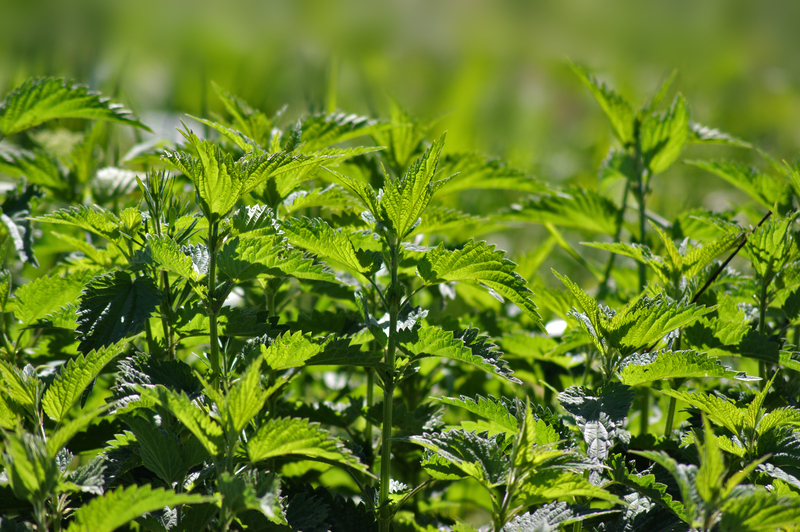Moss: Irritant or Integral?
Posted on 17/06/2025
Moss, those soft, green, velvety masses that we often see clinging to rocks, tree trunks, and shaded lawns, tends to evoke mixed reactions. Some view it as an unwanted invader, while others appreciate its intrinsic value within ecosystems. The dichotomy raises an important question: is moss an irritant or an integral part of our environment? Let's delve into the fascinating world of moss to uncover its roles and importance.
What is Moss?
Mosses are small, non-vascular plants belonging to the bryophyte family, which also includes liverworts and hornworts. Unlike vascular plants, moss lacks specialized structures like xylem and phloem to transport water and nutrients. As a result, they are typically found in moist, shaded environments where they can absorb water directly through their leaves.
Mosses reproduce through spores rather than seeds, and they play a significant role in the ecosystem by contributing to soil formation, moisture regulation, and providing habitat for a variety of organisms.

The Ecological Importance of Moss
While it might seem inconsequential, moss serves as a vital component of many ecosystems. Here are several ways in which moss proves to be integral:
Soil Formation and Erosion Control
Mosses are pioneers in soil formation. They often colonize barren surfaces like rocks and clay, breaking them down through chemical and physical processes. This accumulation of organic material eventually contributes to soil formation. Additionally, mosses help in stabilizing the soil and preventing erosion, particularly on slopes and riverbanks.
Water Retention
Mosses have an extraordinary capability to retain water, making them crucial in moisture regulation within an ecosystem. They act as natural sponges, absorbing and holding moisture, which can be released slowly into the environment. This property is particularly beneficial during dry seasons, providing a constant moisture source for other plants and organisms.
Habitat and Biodiversity
Mosses serve as microhabitats for a diverse array of organisms, including insects, fungi, and small plants. They provide food, shelter, and breeding grounds, thus contributing to biodiversity. In forest ecosystems, mosses can cover large areas of the forest floor, tree trunks, and fallen logs, creating unique microenvironments that support various life forms.
Moss in Human Culture and Practical Uses
Moss has also found numerous applications in human culture and activities. Here are a few notable examples:
Gardening and Landscaping
Moss has been employed in Japanese gardening traditions for centuries, and its use is now gaining popularity worldwide. Moss gardens are celebrated for their tranquil beauty and low maintenance. They create aesthetically pleasing and serene green spaces, often used in Zen gardens to promote relaxation and contemplation.
Air and Water Purification
Several species of moss have been found to possess air and water purification properties. Mosses can absorb various contaminants and heavy metals, making them effective in biofiltration systems. They are sometimes used in green roofs and living walls to improve air quality and contribute to indoor and urban environments.
Historical and Medicinal Significance
In history, mosses have been used for medicinal purposes. During World War I, sphagnum moss was used as a natural wound dressing due to its absorbent and antiseptic properties. Indigenous peoples in various cultures have used mosses as liners for bedding and insulation, demonstrating its versatile utility.
The Challenges Moss Faces
Despite its ecological and practical importance, moss faces several challenges. Here are some of the main threats:
Habitat Destruction
Urbanization, deforestation, and land use changes have led to habitat destruction, threatening many moss species. Wetlands, forests, and other natural habitats where moss thrives are increasingly being cleared for industrial, residential, and agricultural purposes.
Pollution and Climate Change
Air pollution and climate change also pose significant threats to moss populations. Being highly sensitive to pollution, mosses can serve as bioindicators of environmental health. Climate change, with its associated temperature fluctuations and altered precipitation patterns, can further stress moss communities, leading to declines in their populations.

Managing Moss in Built Environments
While moss is invaluable in natural ecosystems, it can sometimes be considered a nuisance in human-made settings. Here, we explore ways to manage moss:
Moss on Lawns and Gardens
In lawns and gardens, moss often appears where grass struggles to grow, such as in shaded or compacted soils. While some gardeners appreciate its aesthetics, others might prefer a moss-free lawn. Managing moss involves improving soil conditions, increasing sunlight exposure, and proper lawn care practices like aeration and balanced fertilization.
Moss on Roofs and Structures
Moss growth on roofs and structures can be problematic due to potential damage and safety hazards. The dense mat of moss can retain moisture, leading to rot, and encourages pest infestations. Periodic cleaning, ensuring proper drainage, and using moss-resistant materials are common strategies to manage moss growth on built structures.
The Dual Nature of Moss
The perception of moss as either an irritant or an integral component of nature largely depends on context and perspective. While some might see it as unwelcome in certain settings, it's crucial to recognize the countless benefits it offers the environment and human activities. Balancing its management in built environments while promoting conservation in natural habitats offers a holistic approach to appreciating this remarkable plant.
By fostering a better understanding of moss's ecological roles, aesthetic contributions, and practical uses, we can move away from viewing moss as merely an irritant and appreciate it as an integral part of our world. Whether embraced as an essential piece of ecological mosaics or managed meticulously in urban settings, moss undoubtedly remains a fascinating and valuable component of the natural world.






 Certified and experienced landscapers
Certified and experienced landscapers



 Get a Quote
Get a Quote